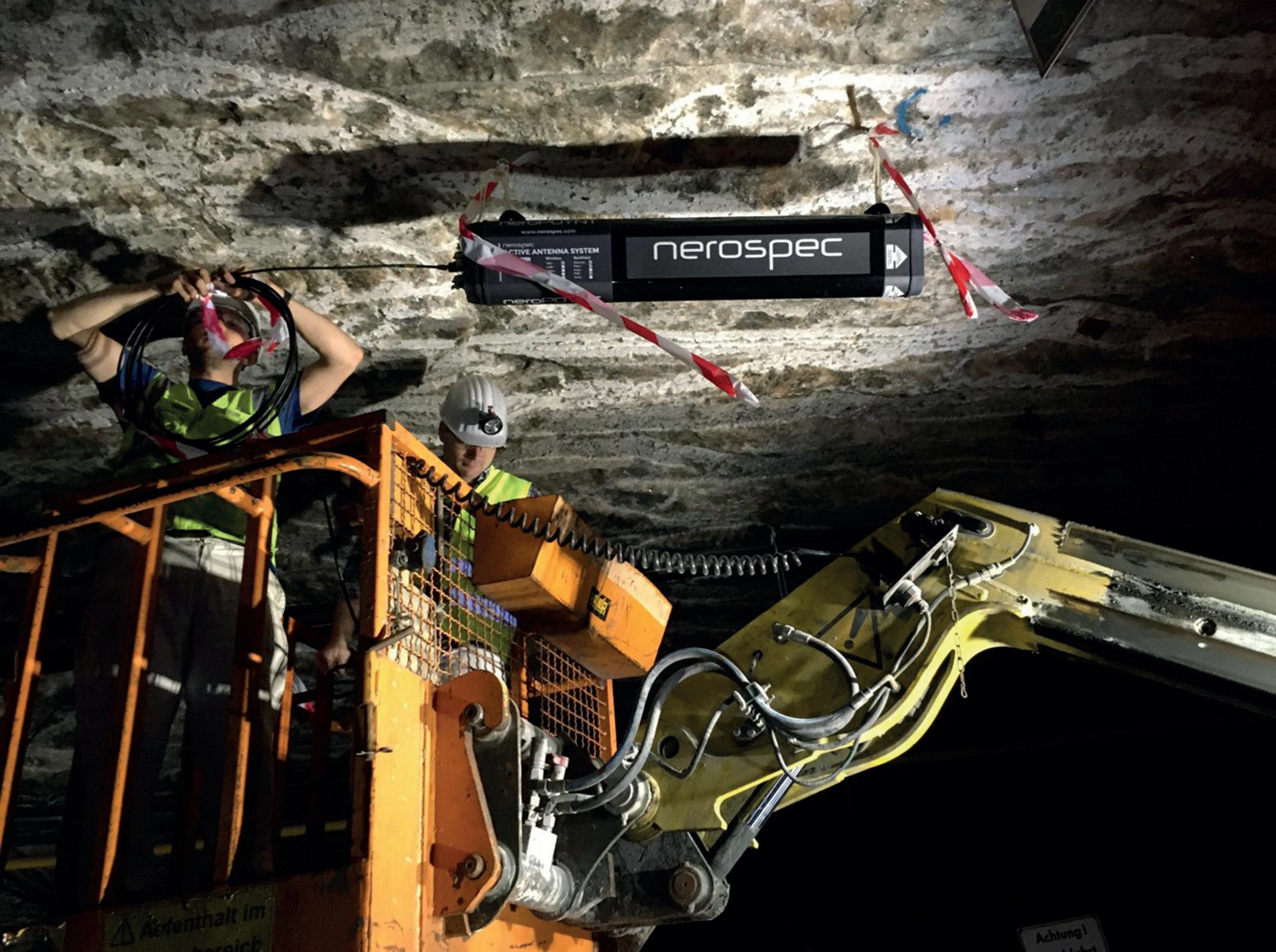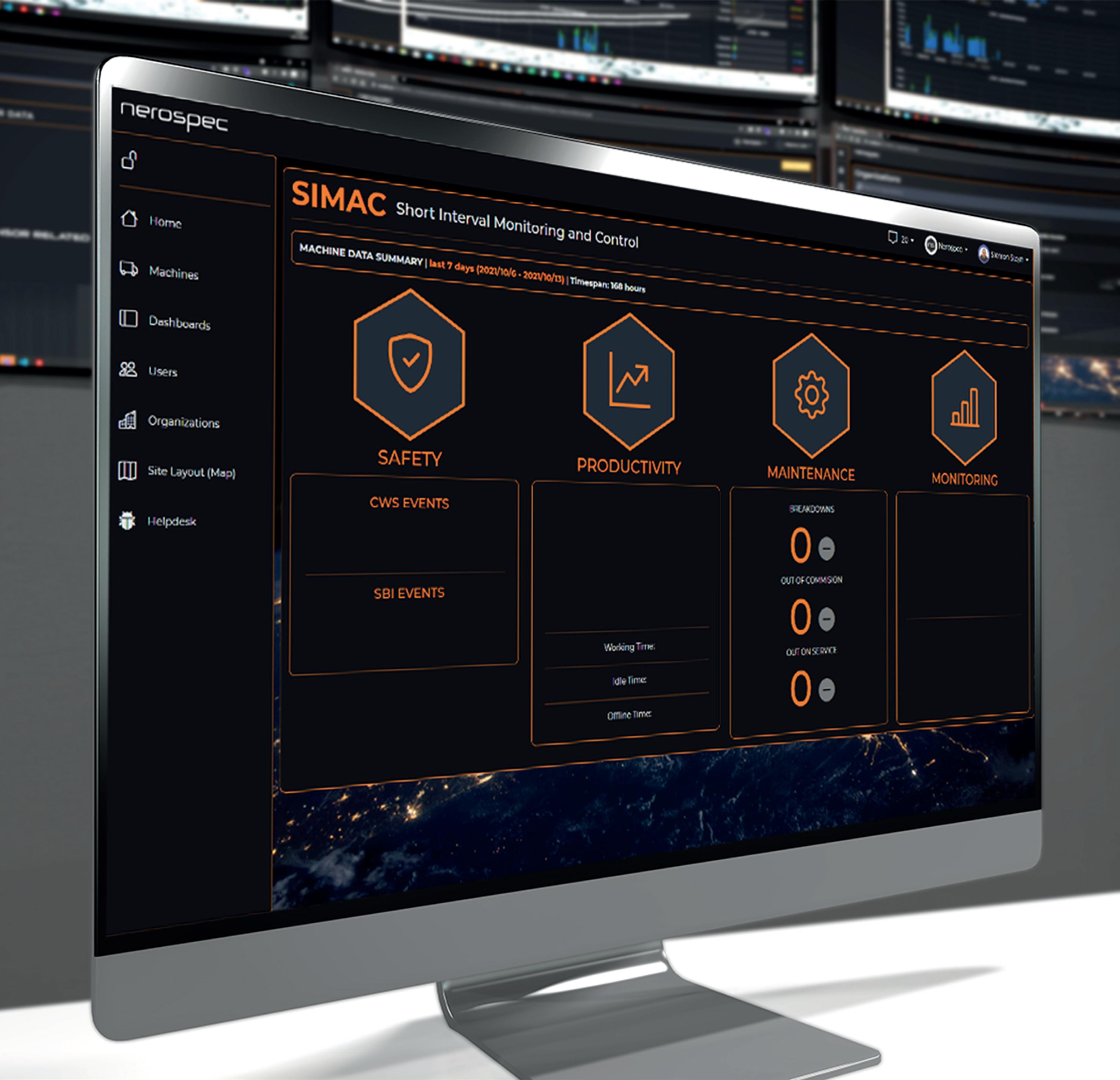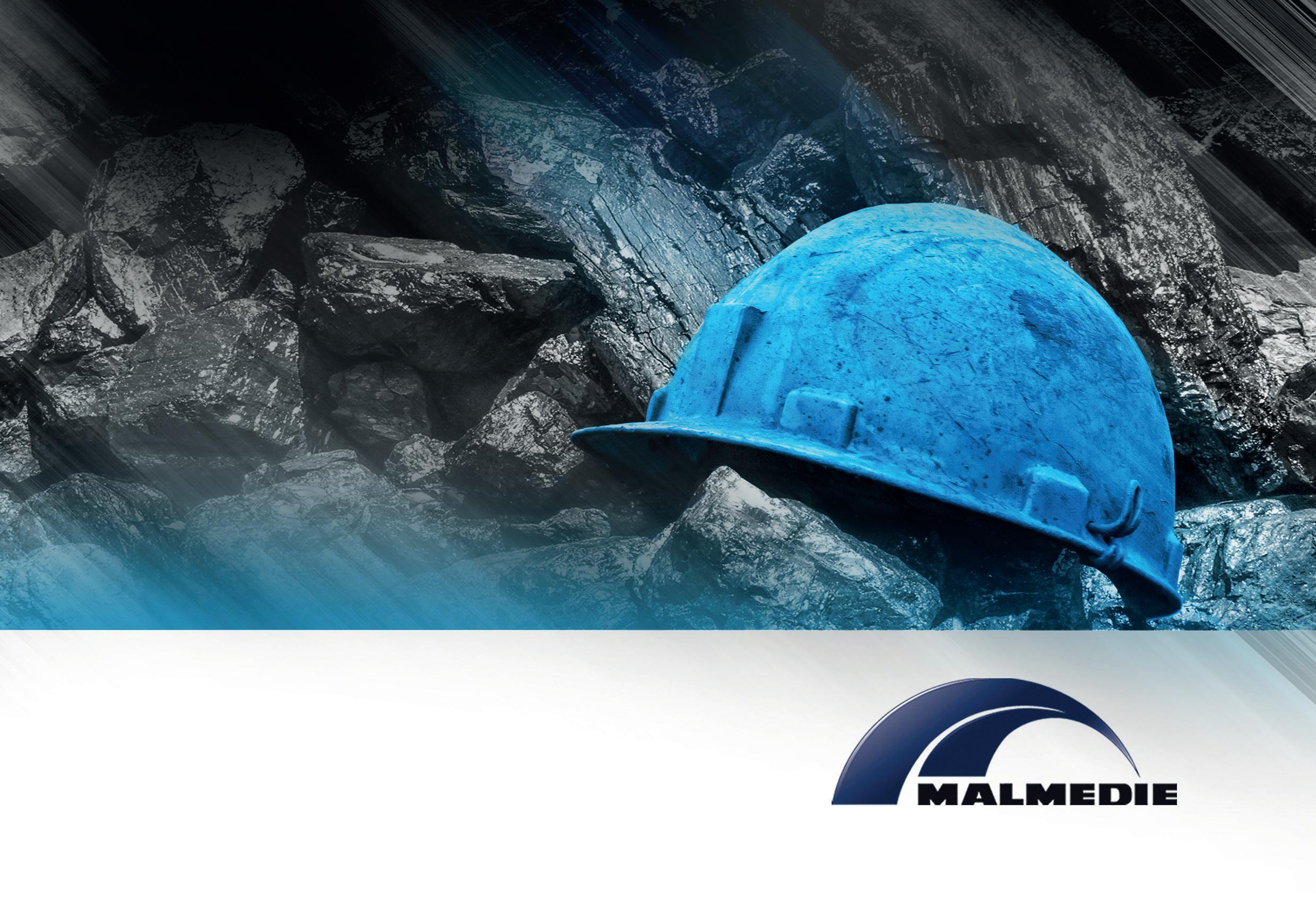
5 minute read
Transforming Underground Mining With Wireless Communication
Dr Eric Pohlmann, Nerospec SK GmbH, Germany, evaluates the value of wireless communication and its potential to transform underground mining operations.
Seamless underground communications remained a challenge in underground mining until the recent introduction of robust wireless connectivity, which is now unlocking additional productivity and increasing safety of miners working underground. Reliable wireless underground communication is the fundamental enabler of modern safety, data analytics, and machine control. Recognising this need, Nerospec SK, a company specialised in cutting edge communication, automation and digital mine solutions, focused on developing simple wireless tunnel connectivity solutions that increase underground connectivity reach significantly.
By mid 2020, Nerospec SK installed its first neroPOYNT – a wireless tunnel connectivity solution – and achieved significant results, exceeding a 10-fold magnitude of reach compared to standard industry equipment. Today, with its underground LTE solutions, the company is on its way to transforming underground mines into fully connected mines – ready for the fourth industrial revolution underground.
Communication technology drives mining innovation
In a recent ‘How digital is your Mine’ survey, hosted by Nerospec SK, it became apparent that the mobile data communication infrastructure is still a potential obstacle in many mines. More than half of the participants reported having no wireless communication in large areas of their mines, with only cable bound phones at selected nodes and UHF/VHF radio only partly available. Interestingly, over 60% of respondents agreed that automation technology and, consequentially, communication technology, as an enabler, would be the greatest drivers of innovation in mining for the coming years ahead.
Nerospec SK has established that it takes a concerted effort and a great deal of innovation to deliver the same seamless connectivity enjoyed above ground, below the surface. With the recent introduction of robust wireless connectivity, it is possible achieve speeds throughout mining tunnels equal to those above ground. Modern wireless tunnel connectivity solutions and underground LTE installations are transforming underground mines into fully connected, digital and automation enabled mines, fit for the future. Taking the lid off of underground mines has become as easy as never before. This allows miners to gain safety and productivity improvements through optimising their operations.
Boosting WiFi
In their quest to deliver robust underground connectivity, Nerospec SK developed the neroPOYNT, a WiFi antenna and booster designed specifically for tunnel environments benefitting from a purpose-built polarised WiFi beam antenna. Following requests for assistance from mines that already have neroHUBs (a specialised machine interface and controller) installed, the company saw a global requirement for these boosters. By June 2020, the first two neroPOYNTs were installed in a South African chrome mine. Despite the challenge of a 1.6 m tunnel height along the conveyor belt path, results of over 635 m of reach were attained within the conveyance tunnel.
Previous attempts to achieve effective wireless coverage supported by university and technology experts failed to achieve wireless coverage of more than just a few tens of metres.
With robust wireless connectivity, the mine was able to receive and transmit machine insights from the neroHUB specialised machine interface and controllers, installed on over 50 machines. This now allows for remote control rooms to receive instant critical machine health and productivity insights, enabling immediate operational insights that drive short interval control (SIC). The addition of four new neroPOYNTs, later in 2020, ensures that active vehicles are regularly connected leading to enhanced machine insights and operational control that is now available from over 100 machines.
Underground WiFi-coverage range
By August 2020, Nerospec SK had installed six neroPOYNTs from the hanging wall of a German saltmine with a tunnel height of 2.4 m and a significant degree of iron in the salt mineral. This installation achieved in excess of 800 m of longitudinal coverage, never seen before in underground mining applications. This new wireless coverage unlocked instant communications throughout the machine fleet, including accurate localisation tracking and mobile service coverage. WhatsApp and underground conferencing services are now possible in the underground environment. The wideranging nature of the coverage opened a plethora of optimisation possibilities, ranging from preventative maintenance to operator analytics, and much more.

Figure 1. neroPOYNT being installed in Germany-based salt mine.
Valuable insights with mine-wide connectivity
Mine-wide connectivity translates to powerful insights being collected, transmitted, computed, and displayed by state-of-the-art software packages, such as SIMAC® (short interval monitoring and control). By harnessing innovative software such as SIMAC, operators and managers alike can access insights via dashboards that are customised to the mine’s specific requirements.
SIC is integrated into the SIMAC experience, ensuring that big data is not only collected, but also interpreted and displayed in ways that enable short interval control decisions. By displaying maintenance statistics in
real time, the software can predict potential failures before they occur, alerting the maintenance foreman ahead of time. The machine productivity remains high with less unplanned downtime and maintenance turn-around times are minimised where data insights are used to prepare for maintenance jobs.
Valuable data insights tailored to the mine’s specific goals and focus areas, deliver previously unseen improvements in production, monitoring, maintenance, and safety.
Automated equipment boosts safety and efficiency
Wireless tunnel connectivity also enables tele-remote, semi, and fully autonomous machine control. Advancements in non-OEM specific onboard controllers, such as the Nerospec SK Hub family (pico, nano, nero, and cyberHUB) allow to edge-compute data and transmit it via modern narrow and broadband wireless communication technology. Nerospec SK is currently involved in various projects where autonomous machines allow mining operations to continue during times when personnel cannot safely access the mining area, such as during after-blast atmospheric venting periods.
Conclusion
The particular choice of technology required to provision an underground communication network is mainly defined by the coverage footprint and throughput requirements. Companies, such as Nerospec SK, are positioning their product offerings to cater for a full range of requirements across the underground mining sector – from low bandwidth, long range to high bandwidth backbone connectivity. The ability to combine the appropriate standards-based radio system into a single interoperable system is the key to maximising underground data network coverage in any given scenario.

Figure 2. Simac being used in a control room.
MALMEDIE
SIMPLY THE ORIGINAL
MALMEDIE.COM


GEAR-COUPLINGS DRUM-COUPLINGS TORQUE-LIMITERS












